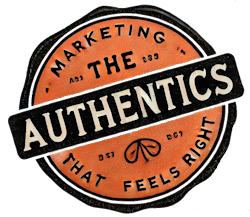When it comes to creating video content that truly connects, nothing beats the power of story.
Stories are how we make sense of the world — and ourselves. They shape how we see what’s possible, what we deserve, and what we’re capable of achieving. And the beauty of it? Through your videos, you can help your audience recognize a story that’s been holding them back… and even inspire them to rewrite it.
We All Live by Stories
There are three kinds of stories that shape us:
- The stories we’ve been told – shaped by our upbringing, culture, religion, family, and life experiences.
- The stories we tell ourselves – our inner narrative, beliefs, and self-talk, whether empowering or limiting.
- The stories we choose going forward – the conscious decisions to rewrite old scripts and adopt new, more empowering narratives.
In your videos, you can help someone identify a false or limiting story they’ve been carrying, inspire them to challenge it, and guide them toward a new perspective.
TIP FOR AUTHENTICS: You don’t have to do it all in one video — simply sparking the awareness is a powerful first step.
Why Story Works So Well in Video
Video gives your audience the opportunity to see your expressions, hear the conviction in your voice, and feel your authenticity. When you share a story that resonates with their experience, you create trust and connection — and position yourself as someone who truly understands their challenges.
Where to Find Stories to Share
Your stories don’t always have to be deeply personal. You can draw from:
- Your own experiences and lessons learned
- Stories from your clients (with permission)
- Anecdotes, motivational tales, or things you’ve read
- Everyday moments that illustrate a bigger truth
The key is to think about your audience: What story are they telling themselves about their current challenge? And how can your story help them see a new way forward?
A Real-Life Example
In our Video Confidence Challenge, we worked with a therapist who believed her peers would judge her harshly if she showed up on camera. That story kept her from sharing her expertise. We helped her identify the narrative, rewrite it, and replace it with one that empowered her to step forward. A year later, she proudly launched her first video course.
That’s the power of story in action.
Your Challenge
Take a moment today to ask yourself:
- What’s one story I want to rewrite?
- What’s one story my audience might need help changing?
Then, find a story — from your life, from your clients, or from the world around you — that can help inspire that shift. Share it in your next video, and watch the connection deepen.
Video Confidence
If you really struggle with confidence in front of the camera and would love help with this, make sure you register for the next Video Confidence Challenge, it is a fun filled supportive week where you will get help to remove obstacles and fears in your way.


I've spent considerable time learning how to tell story in the written form and publish stories in the written form. I'd like to know if the same base principles apply to sharing story on video and how I could adapt my existing skills and story content into video media.